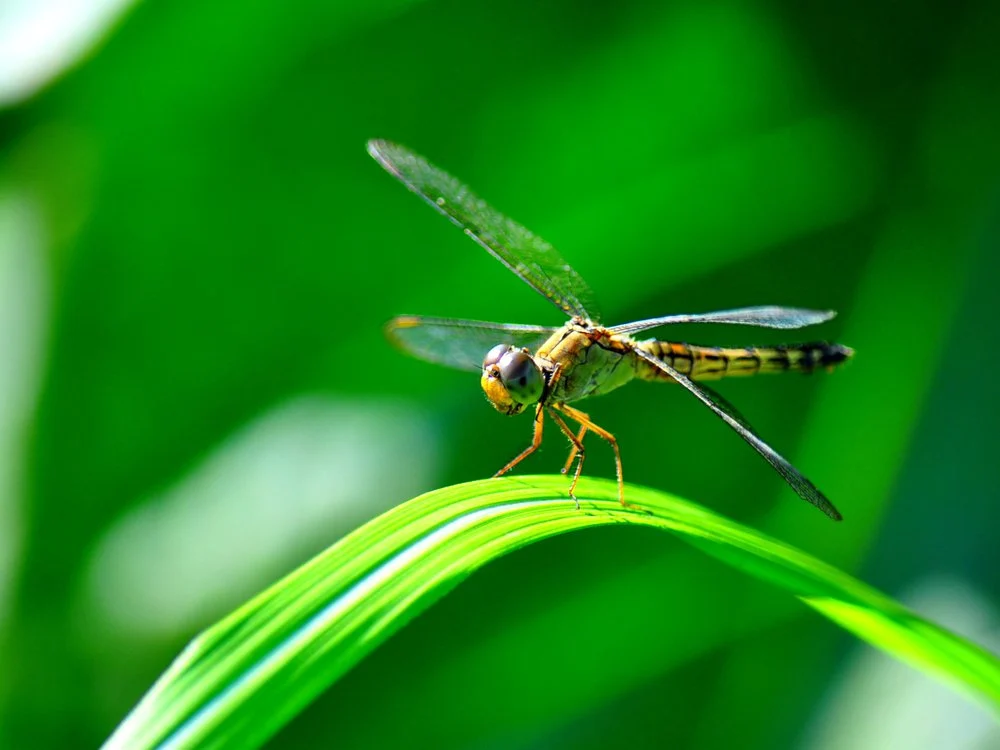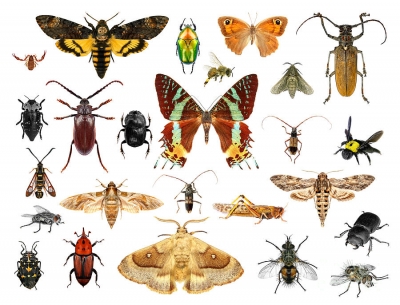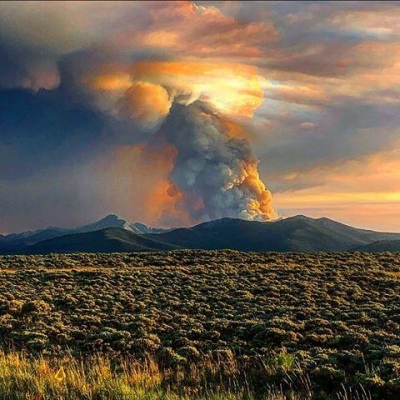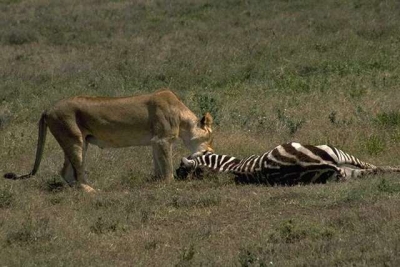WHAT ARE THE FUN FACT ABOUT DRAGONFLIES?

|
Dragonflies are large, fast-flying insects that can dart at speeds up to 60 km per hour. Their four wings move independently of one another and make a rattling sound. Dragonflies can also fly backwards. |
1. Dragonflies Are Ancient Insects
Long before the dinosaurs roamed the Earth, dragonflies took to the air. Griffenflies (Meganisoptera), the gigantic precursors to modern dragonflies had wingspans of over two feet and dotted the skies during the Carboniferous period over 300 million years ago.
2. Dragonfly Nymphs Live In the Water
There's a good reason why you see dragonflies and damselflies around ponds and lakes: They're aquatic! Female dragonflies deposit their eggs on the water's surface, or in some cases, insert them into aquatic plants or moss. Once hatched, the nymph dragonfly spends its time hunting other aquatic invertebrates. Larger species even dine on the occasional small fish or tadpole. After molting somewhere between six and 15 times, a dragonfly nymph is finally ready for adulthood and crawls out of the water to shed its final immature skin.
3. Nymphs Breath Through Their Anus
The damselfly nymph actually breathes through gills inside its rectum. Likewise, the dragonfly nymph pulls water into its anus to facilitate gas exchange. When the nymph expels water, it propels itself forward, providing the added benefit of locomotion to its breathing.
4. Most New Dragonfly Adults Are Eaten
When a nymph is finally ready for adulthood, it crawls out of the water onto a rock or plant stem and molts one final time. This process takes several hours or days as the dragonfly expands to its full body capacity. These newly emerged dragonflies, known at this stage as teneral adults, are soft-bodied, pale, and highly vulnerable to predators. Until their bodies fully harden they are weak flyers, making them ripe for the picking. Birds and other predators consume a significant number of young dragonflies in the first few days after their emergence.
5. Dragonflies Have Excellent Vision
Relative to other insects, dragonflies have extraordinarily keen vision that helps them detect the movement of other flying critters and avoid in-flight collisions. Thanks to two huge compound eyes, the dragonfly has nearly 360° vision and can see a wider spectrum of colors than humans. Each compound eye contains 28,000 lenses or ommatidia and a dragonfly uses about 80% of its brain to process all of the visual information it receives.
6. Dragonflies Are Masters of Flight
Dragonflies are able to move each of their four wings independently. They can flap each wing up and down, and rotate their wings forward and back on an axis. Dragonflies can move straight up or down, fly backward, stop and hover, and make hairpin turns—at full speed or in slow motion. A dragonfly can fly forward at a speed of 100 body lengths per second (up to 30 miles per hour).
7. Male Dragonflies Fight for Territory
Competition for females is fierce, leading male dragonflies to aggressively fend off other suitors. In some species, males claim and defend a territory against intrusion from other males. Skimmers, clubtails, and petaltails scout out prime egg-laying locations around ponds. Should a challenger fly into his chosen habitat, the defending male will do all he can to chase away the competition. Other kinds of dragonflies don't defend specific territories but still behave aggressively toward other males that cross their flight paths or dare to approach their perches.
8. Male Dragonflies Have Multiple Sex Organs
In nearly all insects, the male sex organs are located at the tip of the abdomen. Not so in male dragonflies. Their copulatory organs are on the underside of the abdomen, up around the second and third segments. Dragonfly sperm, however, is stored in an opening of the ninth abdominal segment. Before mating, the dragonfly has to fold his abdomen in order to transfer his sperm to his penis.
9. Some Dragonflies Migrate
A number of dragonfly species are known to migrate, either singly or en masse. As with other migratory species, dragonflies relocate to follow or find needed resources or in response to environmental changes such as impending cold weather. Green darners, for example, fly south each fall in sizeable swarms and then migrate north again in the spring. Forced to follow the rains that replenish their breeding sites, the globe skimmer—one of several species that's known to spawn in temporary freshwater pools—set a new insect world record when a biologist documented its 11,000 mile trip between India and Africa.
10. Dragonflies Thermoregulate Their Bodies
Like all insects, dragonflies are technically ectotherms ("cold-blooded"), but that doesn't mean they're at the mercy of Mother Nature to keep them warm or cool. Dragonflies that patrol (those that habitually fly back and forth) employ a rapid whirring movement of their wings to raise their body temperatures. Perching dragonflies, on the other hand, who rely on solar energy for warmth, skillfully position their bodies to maximize the surface area exposed to sunlight. Some species even use their wings as reflectors, tilting them to direct the solar radiation toward their bodies. Conversely, during hot spells, some dragonflies strategically position themselves to minimize sun exposure, using their wings to deflect sunlight.
Credit : Thought co ?
Picture Credit : Google


